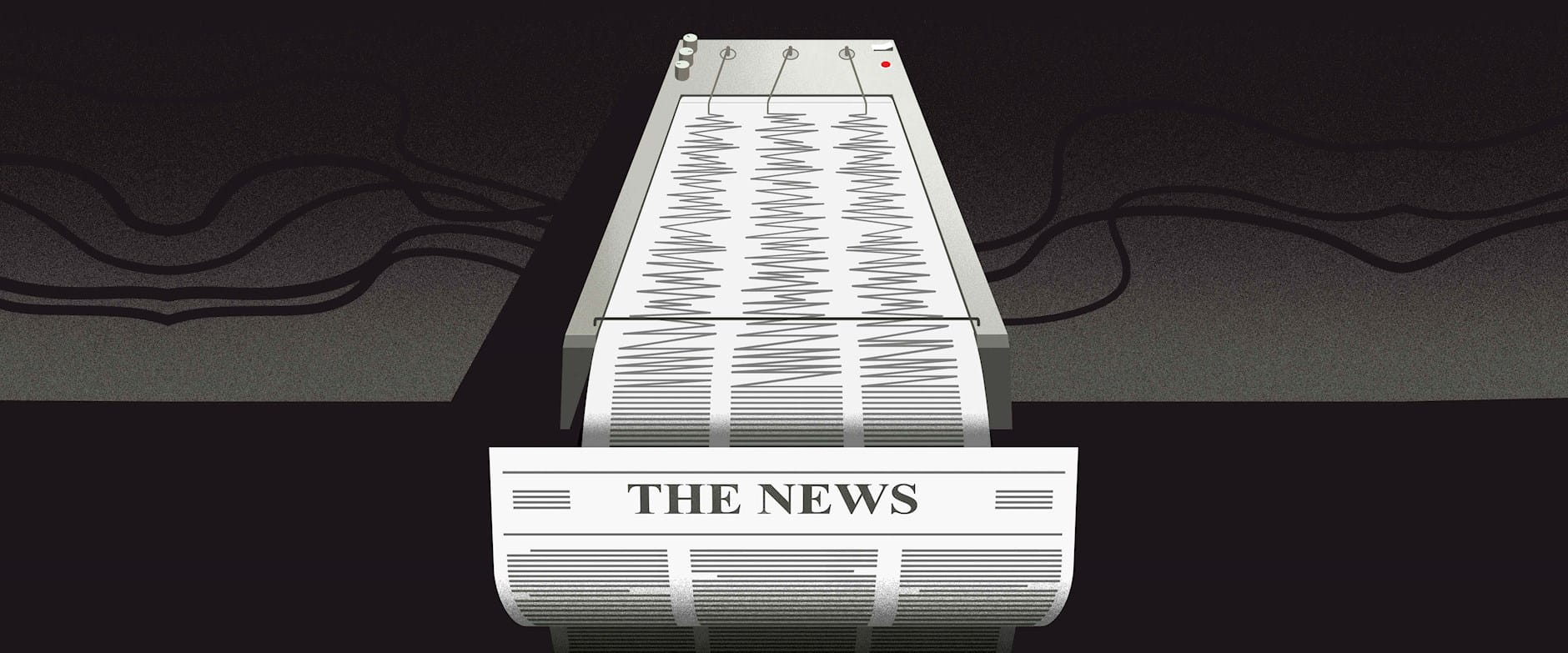What is AI doing to fight misinformation? AI is using powerful tools like machine learning and deep learning to spot and flag fake news. These tools learn to identify the patterns and red flags that often show up in misleading content, helping us sift through the noise and find real information.
Misinformation has always been a challenge, but the speed and scale at which it spreads online today make it a truly tricky problem. We’re talking about everything from obviously false stories to cleverly crafted propaganda that’s hard to tell from the real deal. And with more and more people getting their news online, the potential impact of misinformation is huge. That’s why the rise of AI as a countermeasure is so important. Having worked with a range of technologies that are capable of identifying patterns in datasets, I can see the real potential AI brings in this fight.

Image Source: www.chicagobooth.edu
AI’s Arsenal: Tools for Truth
Let’s dig into how AI actually tackles this problem. It’s not some magic wand, but rather a collection of sophisticated techniques. These can be broken down into a few key areas.
Machine Learning: Training the Watchdogs
At its core, AI’s fight against misinformation relies heavily on machine learning. Think of it like training a dog. You show it examples of good and bad behavior, and eventually, it learns to tell the difference. In the same way, we feed machine learning models lots of information – examples of real news and examples of fake news. The AI detection of misinformation algorithms learn the common traits of each.
Here are some things these algorithms look for:
- Language Patterns: Fake news often uses specific types of language. It might be highly emotional, full of exaggeration, or use very strong words. AI algorithms can pick up on these things, even if a person might not notice right away.
- Source Reliability: Machine learning can analyze the sources of information. Is it a well-known news organization, or a random website that has popped up overnight? The AI learns to identify and prioritize reputable sources.
- Network Analysis: How does information spread? Is it shared by many credible accounts or mostly by bots? Analyzing networks provides clues to the trustworthiness of the information. AI algorithms for misinformation use network maps to spot suspect patterns.
- Content Consistency: Does the information match up with other reports? Machine learning misinformation identification checks for inconsistencies to flag anything that seems out of line.
Deep Learning: Uncovering Deeper Deception
Deep learning, a more advanced type of machine learning, adds another layer of sophistication. It’s like having a detective with a really good magnifying glass. Deep learning for disinformation excels at finding subtle patterns and nuances in text, images, and videos.
Here’s what makes it so powerful:
- Complex Text Analysis: Deep learning can understand the meaning and context of language much better than basic machine learning. It can pick up on sarcasm, irony, and subtle manipulation tactics.
- Image and Video Analysis: Deep learning can spot things that the human eye might miss – altered images, manipulated videos (deepfakes), or even subtle clues in the background.
- Multimodal Analysis: Combining different types of information – text, images, video, audio – allows for more accurate assessment. This is essential for complex misinformation campaigns that might use multiple methods to deceive people.
Automated Misinformation Analysis: Speed Matters
One of the biggest challenges is that misinformation spreads so fast. That’s where automated misinformation analysis comes in. AI tools can quickly analyze large amounts of data from across the internet, 24/7. They aren’t bogged down by the sheer volume. This speed is crucial in the battle against rapidly spreading false news.
Here are some of its important functions:
* Real-time monitoring: AI monitors social media, news websites, and other platforms for suspicious content in real-time.
* Automatic flagging: When a piece of content is identified as potentially misleading, the AI can flag it for review by human fact-checkers.
* Rapid response: The speed of AI helps to slow down the spread of misinformation before it gains too much momentum.
How AI is Used in Practice: Real World Examples
You may not realize it, but AI is already at work behind the scenes, helping to keep us informed. Here’s how:
Fact-Checking and Verification
Artificial intelligence fact-checking is not about replacing human fact-checkers but rather equipping them with better tools. AI can do the initial heavy lifting – identifying potentially false information – so fact-checkers can focus on the more complicated, nuanced cases. The AI helps them prioritize what needs attention first. AI assists in:
- Gathering supporting evidence: Automatically finding related articles, reports, and data to help verify the claim in question.
- Identifying the origin: Finding the sources of information and identifying any biases or conflicts of interest.
- Checking quotes: Helping determine if quotes are accurate by comparing them across different sources.
Platform Moderation
Social media companies use misinformation detection models to flag content that violates their guidelines. AI algorithms analyze posts, videos, and comments for potentially false or harmful content. This is a constant, evolving process as misinformation tactics get more sophisticated.
Here are a few key steps:
- Content Scanning: AI constantly scans user-generated content for potentially misleading language, images, and videos.
- Automated Removal: In some cases, AI can automatically remove content that clearly violates the guidelines or has been flagged as misinformation.
- User Reporting: AI can also support user reporting systems, allowing users to report content they believe is misleading.
AI Tools for Verifying Information: The Citizen’s Ally
The average person can also benefit from AI tools for verifying information. These tools are designed to help us become more savvy consumers of information, able to spot red flags before we share or believe anything false. Many are freely available online.
Here are some examples of tools available:
* Reverse Image Search: Helping to determine if an image has been altered or taken out of context.
* Website Analysis: Some tools provide background checks on websites, highlighting their ownership and any potential biases.
* Fact-checking Extensions: Browser extensions that can quickly verify claims on the pages you visit.
The Challenges and Limitations
While AI is a powerful tool, it’s not a perfect solution, and there are a few important things to keep in mind.
The Adaptability of Misinformation
Misinformation campaigns are constantly changing. Bad actors use new tricks and find ways to get around the detection systems. So, AI tools must always be adapting, learning new patterns and identifying new tactics. Think of it as an arms race, where both sides are constantly working to outmaneuver the other.
Bias in AI Algorithms
Just like humans, AI can be biased. If an AI is trained on biased datasets, it will naturally reflect that bias in its results. This can mean that some types of misinformation might be identified more easily than others, while other communities are disproportionately impacted by misidentification. We are working hard to mitigate bias, and making sure the datasets we use are as fair and representative as possible.
The Human Element
AI can help but it can’t work completely in a vacuum. Ultimately, humans still play a crucial role in the fight against misinformation. Fact-checkers need to carefully review the results and provide context. People need to develop critical thinking skills and the ability to evaluate information. We cannot rely completely on automation. AI-powered truth verification is a valuable tool, but not the single answer.
The Future of AI in Fighting Misinformation
Looking ahead, AI is expected to become even more important in combating misinformation. Here are a few things we might see in the near future:
- More Sophisticated Algorithms: AI algorithms will continue to improve. They will become better at understanding context, nuance, and new types of misinformation.
- More Collaboration: AI tools could be combined to create more powerful systems, and researchers will have access to resources for better AI-powered truth verification.
- User Empowerment: AI can be used to give regular internet users the tools they need to verify information for themselves.
Frequently Asked Questions (FAQ)
Q: Can AI completely stop misinformation?
A: No, AI is not a silver bullet. It’s a powerful tool, but misinformation is a constantly evolving challenge. It’s more accurate to say AI helps combat misinformation, playing a vital role in reducing its spread but it won’t eliminate it completely.
Q: Are AI fact-checkers always accurate?
A: No, AI algorithms are not perfect. They can make mistakes, especially with complex or nuanced information. That’s why human fact-checkers are still important. The AI flags the questionable information, and the experts do the in-depth analysis.
Q: What if I get flagged for sharing misinformation by an AI?
A: Often platforms will remove or hide content, and let the user know why. If you shared it unintentionally, it can be a good reminder to be more careful with sources in the future. It’s an opportunity to learn more about how to verify the truth.
Q: Does AI threaten freedom of speech?
A: This is a valid concern. It’s important to ensure that AI tools are not used to censor or silence people. Responsible AI development and deployment should focus on identifying and removing misinformation, not suppressing legitimate opinions. There has to be a balance between protecting people and protecting the right to free speech.
Q: Can I use AI tools to check information before I share it?
A: Yes! There are a lot of useful tools available – check out fact-checking websites or browser extensions. It’s always a good idea to do your own research, especially before sharing anything that could be misleading.
In short, AI is not going to solve our problems overnight. But with its ability to rapidly analyze data and detect patterns, it is certainly giving us a much better chance in the fight for truth. It is a battle that we’re all going to have to participate in, and these new technological tools can really help us understand our part in it.
I’m Rejaul Karim, an SEO and CRM expert with a passion for helping small businesses grow online. I specialize in boosting search engine rankings and streamlining customer relationship management to make your business run smoothly. Whether it's improving your online visibility or finding better ways to connect with your clients, I'm here to provide simple, effective solutions tailored to your needs. Let's take your business to the next level!

